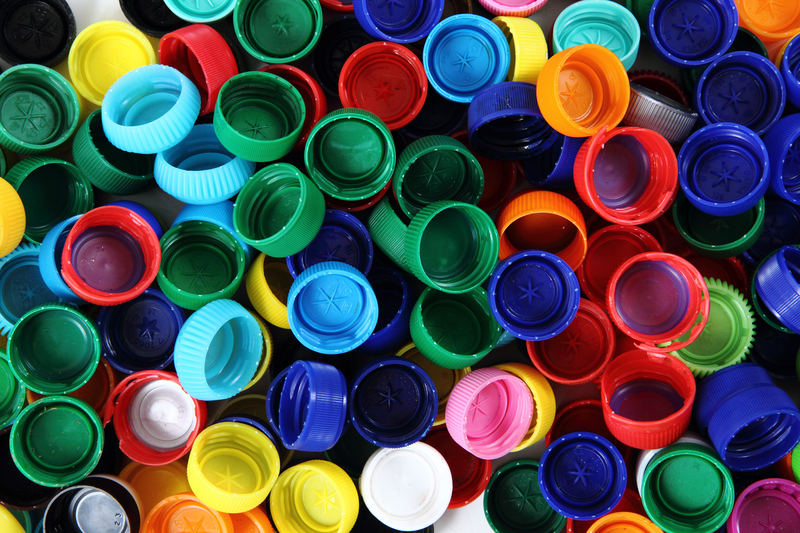Collaborative Recycling Practices in Schools: Building a Sustainable Future Together
Recycling has become an essential pillar in creating a sustainable environment. Schools play a crucial role in shaping the environmentally conscious citizens of tomorrow. By embracing collaborative recycling practices in schools, educators, students, staff, and the surrounding community can collectively contribute to waste reduction, resource conservation, and an ecologically sound lifestyle. This article delves into various ways schools can implement, support, and sustain effective recycling initiatives through collaboration, engagement, and education.

Why Are Collaborative Recycling Initiatives Important in Schools?
School-based recycling programs do more than just reduce waste--they foster responsibility, teamwork, and environmental stewardship among young minds. Collaborative recycling encourages participation from all school stakeholders, turning isolated efforts into a powerful, school-wide movement. When implemented correctly, such programs can significantly decrease landfill contributions, conserve natural resources, and serve as powerful educational tools.
- Promote Environmental Awareness: Regular participation in recycling develops lasting eco-friendly habits.
- Encourage Teamwork: Students, teachers, and custodians work together, strengthening community bonds.
- Enhance Curriculum: Recycling initiatives can be woven into subjects like science, social studies, and mathematics.
Key Elements of Collaborative Recycling Programs in Schools
What makes a recycling program collaborative and effective? Let's break down the essential components that drive successful recycling initiatives in educational settings:
1. Establishing Recycling Goals Together
Set measurable objectives as a team--for example, reducing cafeteria waste by 50% or achieving a specific recycling rate. Involving students, teachers, and parents in goal-setting ensures collective ownership and accountability.
2. Creating a School Recycling Committee
A dedicated recycling committee--comprising students, faculty, custodians, and sometimes parents--serves as the backbone of the program. This committee meets regularly to discuss progress, brainstorm new ideas, and ensure everyone stays motivated and informed.
- Elect student recycling ambassadors to foster peer involvement.
- Assign specific roles: coordinator, communication officer, data recorder, etc.
3. Conducting Waste Audits Collaboratively
Teams conduct waste audits to identify what types of waste are being generated, what is recyclable, and where improvements can be made. Involving students in these audits transforms learning into hands-on experience--they analyze data, report findings, and recommend changes.
4. Designing Visible and Accessible Recycling Stations
Recycling bins should be clearly labeled, easy to access, and placed strategically throughout the school. Input from students and staff can pinpoint high-traffic areas and common gathering spots.
- Use colorful, age-appropriate signage.
- Label bins for paper, plastics, metals, and compost if possible.
- Enlist art students to design posters or decorate bins, enhancing ownership and visibility.
5. Integrating Recycling into the School Curriculum
Education is at the heart of collaborative recycling endeavors in schools. Teachers can:
- Incorporate recycling facts and local environmental challenges into their lessons.
- Organize project-based learning--for example, researching alternative uses for recycled materials.
- Host field trips to local recycling centers or eco-friendly businesses.
Steps to Implement Collaborative Recycling Practices in Your School
Are you eager to introduce or enhance collaborative recycling at your school? Follow these detailed steps to ensure maximum participation and sustainable success.
Step 1: Gain Administrative and Community Buy-In
A recycling program won't thrive without enthusiastic administrative support. Organize presentations or share research on the benefits of recycling for schools, emphasizing long-term cost savings and environmental impact.
Step 2: Form an Inclusive Recycling Team
- Invite representatives from all stakeholder groups: students, teachers, support staff, and, if possible, parents or local recycling experts.
- Hold regular meetings to ensure open communication, creative brainstorming, and problem-solving.
Step 3: Identify Recycling Streams and Waste Hotspots
Conduct a baseline waste assessment to determine where recyclables are most commonly disposed of. Focus efforts on classrooms, cafeterias, offices, and play areas.
Step 4: Educate and Engage the School Population
- Host **school assemblies** explaining what can and cannot be recycled.
- Present statistics and visuals on waste reduction progress.
- Feature recycling tips and news in school newsletters or social media channels.
Step 5: Monitor Progress and Celebrate Success
Regularly evaluate the program's effectiveness. Celebrate milestones, such as reaching certain recycling targets, with incentives or green awards. Recognition sustains momentum and makes recycling a point of pride for everyone.
Innovative School Recycling Projects Around the World
Many schools globally have championed collaborative recycling initiatives that go far beyond standard practices. Here are some inspiring examples:
Composting and Gardening Programs
- Schools collect organic waste from cafeterias and use compost for on-site gardens.
- Students participate in every step, from food separation to planting and harvesting produce.
E-Waste Drives and Repurposing Events
- Dedicated drives collect discarded electronics. Technically skilled students help sort, refurbish, or properly recycle devices.
Art Projects from Recycled Materials
- Art teachers collaborate with the recycling team to create sculptures or murals from plastic bottles, caps, or scrap metal.
Community Involvement Days
- Organize "Green Fairs" or recycling competitions, inviting families and local businesses for broader impact.
Challenges and Solutions for Effective Recycling in Schools
While the benefits of collaborative recycling practices in educational institutions are clear, certain obstacles may arise. Here's how to address common challenges:
- Contamination: Host workshops on sorting and provide real-life examples to prevent mixing trash with recyclables.
- Limited Funding: Seek community partners or grants; repurpose used containers as recycling bins.
- Lack of Participation: Appoint passionate student leaders; reward consistent contributors.
- Unclear Policies: Document and post recycling guidelines in all classrooms and common areas.
Benefits of Collaborative Recycling in Schools
When schools embrace a unified approach, the advantages of school recycling programs multiply:
- Environmental Impact: Less landfill waste, reduced pollution, and conservation of natural resources.
- Economic Benefits: Decreased waste disposal costs and potential revenue from recycled materials.
- Educational Value: Hands-on learning opportunities and development of critical life skills.
- Community Engagement: Fosters a sense of unity and shared responsibility for the environment.
- Leadership and Teamwork: Students gain experience in management, advocacy, and collaborative problem-solving.
Best Practices for Sustaining Recycling Efforts in Schools
To ensure your school recycling initiatives remain effective over time, adopt these proven strategies:
- Celebrate Success: Regular recognition of achievements maintains enthusiasm.
- Continuous Education: Keep recycling at the forefront with ongoing campaigns, new learning modules, and updates from the committee.
- Community Partnerships: Collaborate with local businesses, waste haulers, and environmental groups for resources, expertise, or funding.
- Feedback Loops: Invite suggestions from students and staff for ongoing improvement.
- Monitor Trends: Analyze recycling data to spot issues early and adapt strategies as needed.

Leveraging Technology for School Recycling
The digital age offers creative ways to improve collaborative recycling in schools:
- Recycling Apps: Use digital tools for tracking recycling rates or sharing tips and progress reports.
- Online Challenges: Host virtual or app-based recycling competitions among classes or grades.
- Social Media Campaigns: Share success stories and educational content to motivate the wider school community.
Conclusion: The Power of Shared Commitment
Implementing collaborative recycling practices in schools paves the way for lifelong environmental consciousness. By bringing together students, teachers, administrators, and the wider community, schools can dramatically increase their positive impact on the environment--teaching both academic concepts and vital citizenship skills.
Ready to build a greener school community? Encourage open discussion, celebrate progress, and make recycling a visible, shared priority. Together, we can create schools that do more than educate--they inspire a legacy of sustainability.
Frequently Asked Questions About Collaborative Recycling in Schools
- How do we motivate students to participate? Involve students in decision-making, feature their achievements, and offer fun recycling challenges.
- What materials can be recycled in schools? Most programs include paper, plastic bottles, aluminum cans, and sometimes organics (compost). Check with your local waste authority for specifics.
- How can we measure our impact? Regularly track the weight or volume of materials collected, and compare before-and-after data.
- Should we get parents involved? Absolutely! Parents can reinforce recycling habits at home and help with events or logistics.
Additional Resources
Implement school-wide recycling with collaboration at its core, and watch your students lead the charge toward a cleaner, greener future!